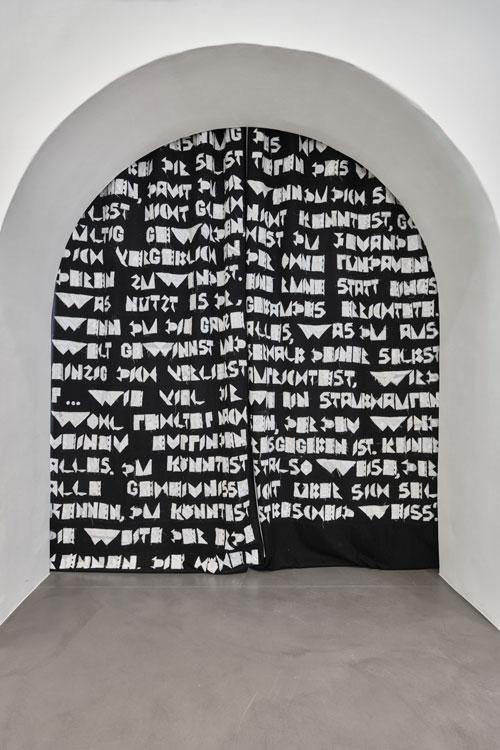Redesign
A tour of the church
Andreas Skorupa’s windows focusing on the Holy Trinity and on the unknowability of God and Creation on the west-facing side of Marienkirche, plus the Hope of Consummation cycle in the apse symbolize both the beginning and the end. When visitors enter the church the first things they see are the Holy Trinity and the story of Creation (flora and fauna). The last thing is the Resurrection, surrounded by the Consummation of Creation, Maria Magdalena and the doubting Apostle Thomas. Along the way, visitors pass Birgit Ziegert’s angel wings, a floor intarsia made of nickel silver. To their right and left, starting with the aisle windows, they are presented with fundamental issues such as time, faith, love, suffering and divine forgiveness. The themes of the windows by Goldstein artists Bockelt, Schmitz, Skorupa, Ziegert and von Saalfeld are questions that have preoccupied humans since time immemorial. The niche dedicated to the Virgin Mary by Markus Schmitz made of natural limestone is a place to pause and reflect underneath the window on the right-hand side aisle. In the church choir, viewers come across the ambo by Stefan Häfner. Behind this, Julius Bocklet’s 2.8-metre ebony figure of Christ towers up monumentally. A man is standing upright with outstretched arms, his mere body a symbol of the cross. Marienkirche’s side chapel is located to the left of the choir. The textile piece by Julia Krause-Harder with its quotation from Bernard of Clairvaux separates the sacred from the profane area. The quotation again references Man the Believer, acting as a transition to the video installation which shows interviews with people with and without disabilities who live and work in the St. Vincenzstift.
Julia Krause-Harder, textile work (quote: B. v. Clairvaux), Wool und Nettle, 430x450cm, 2015




